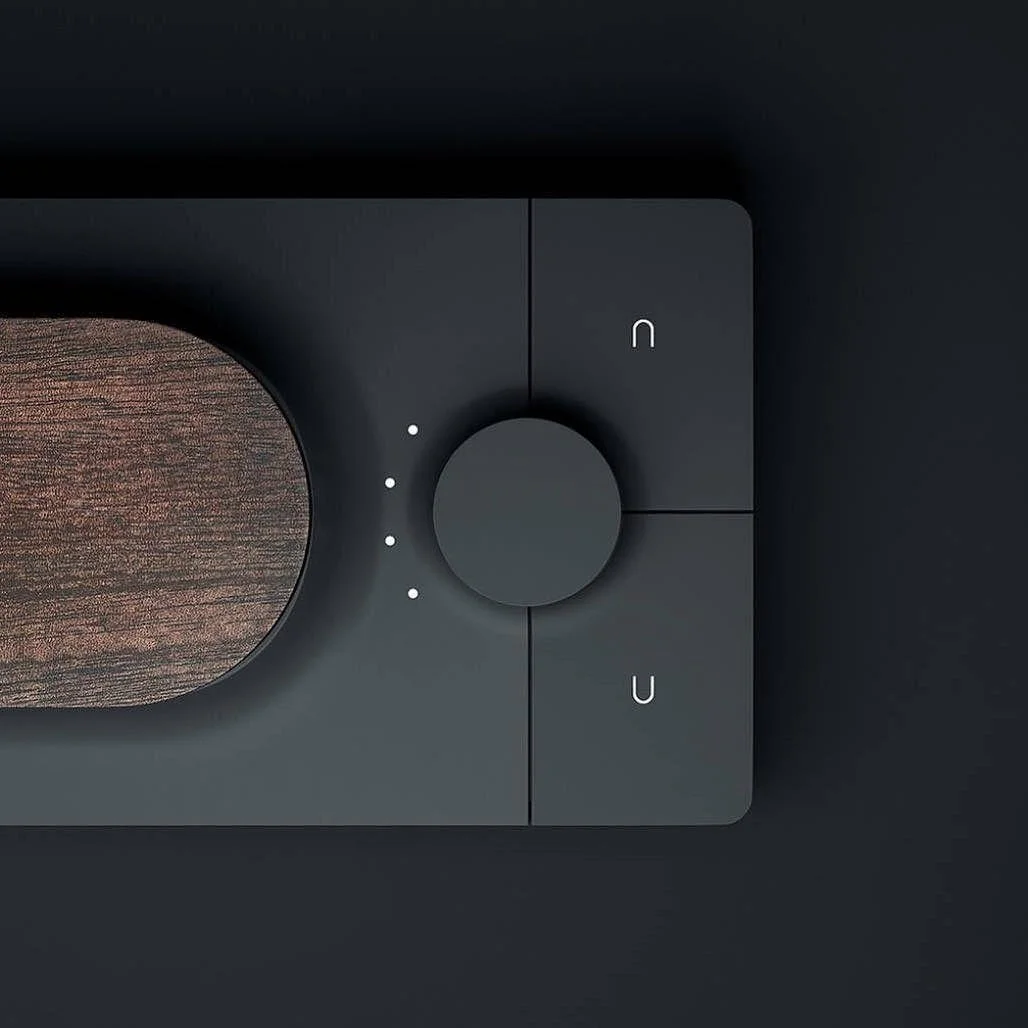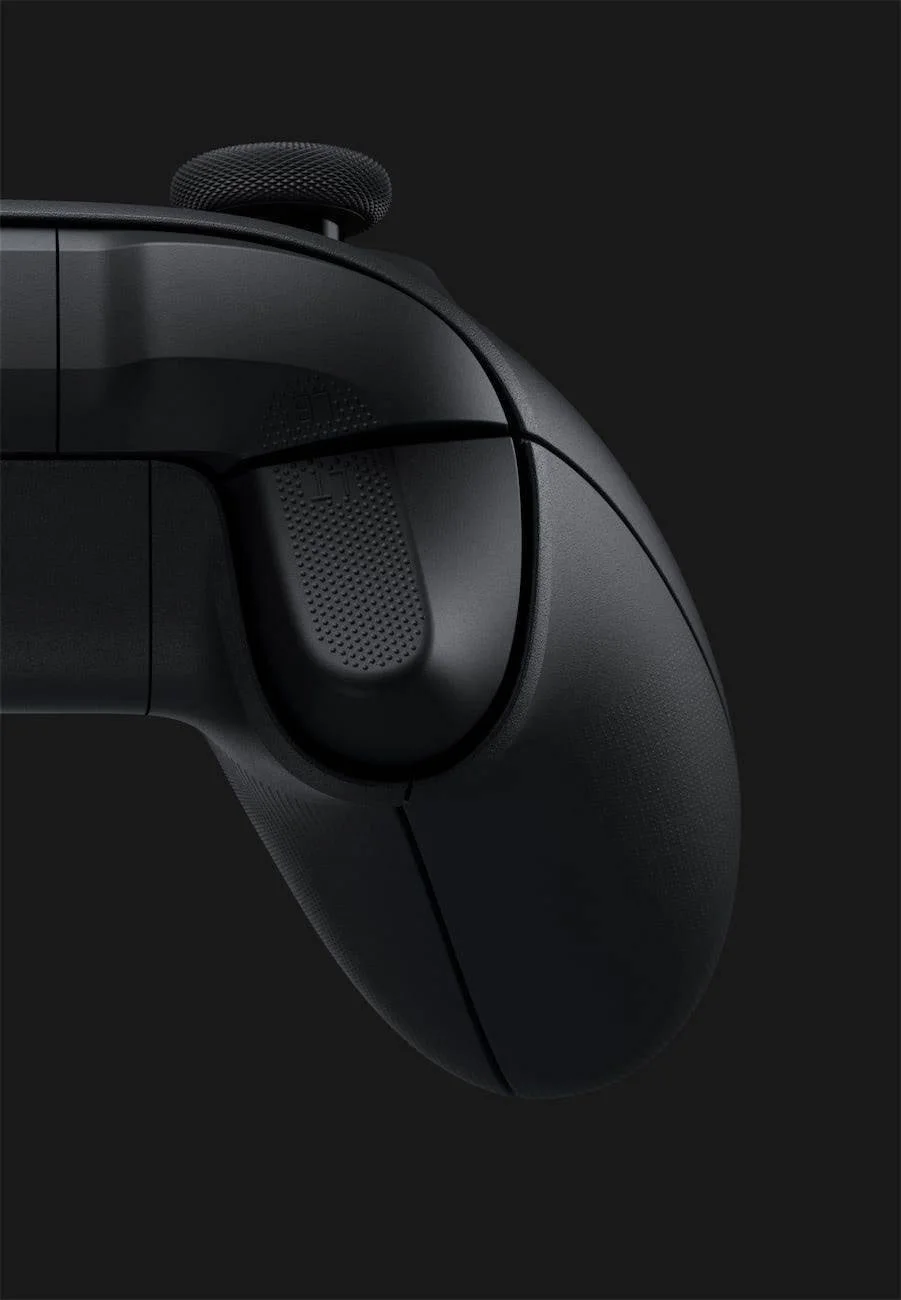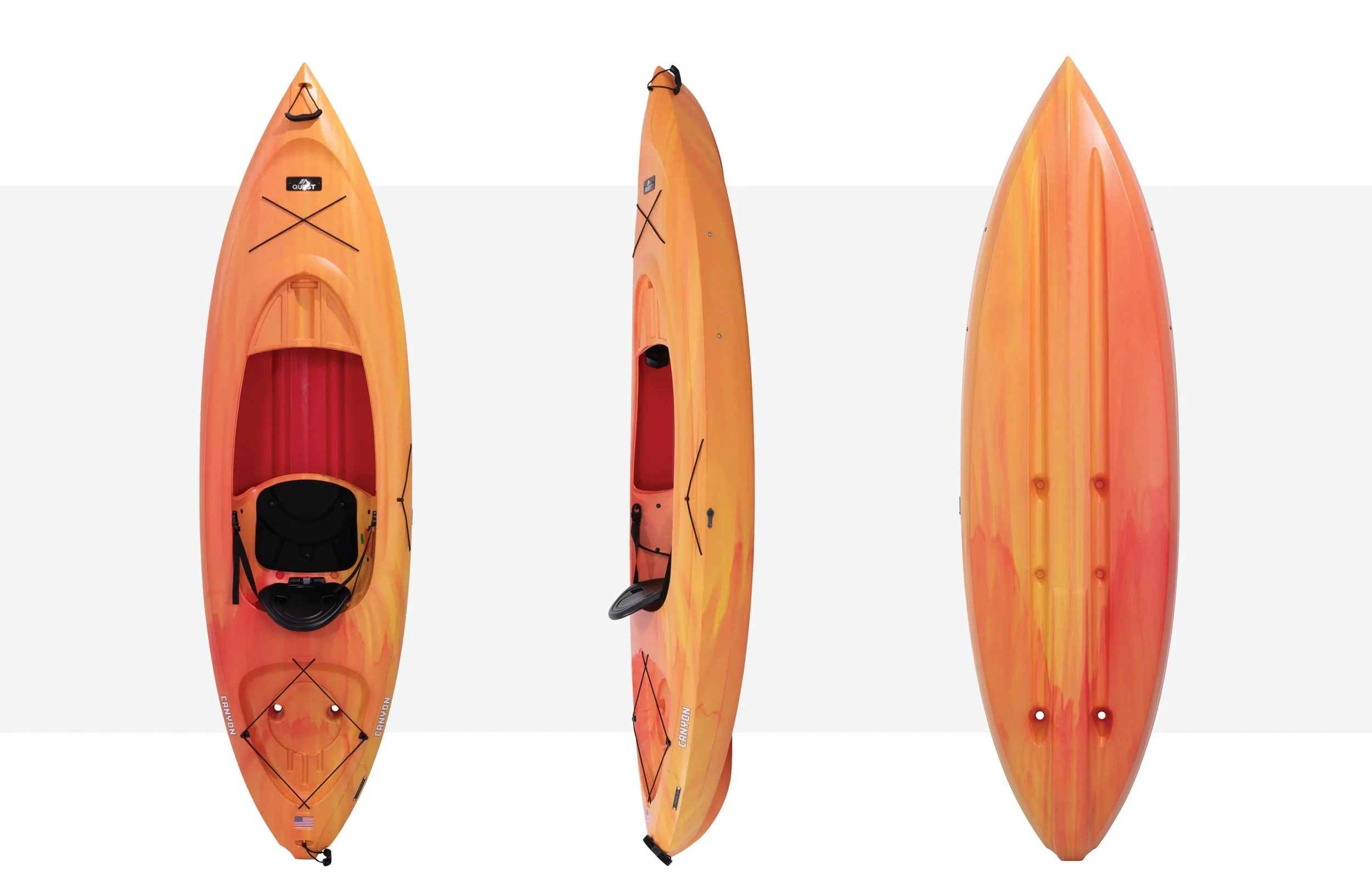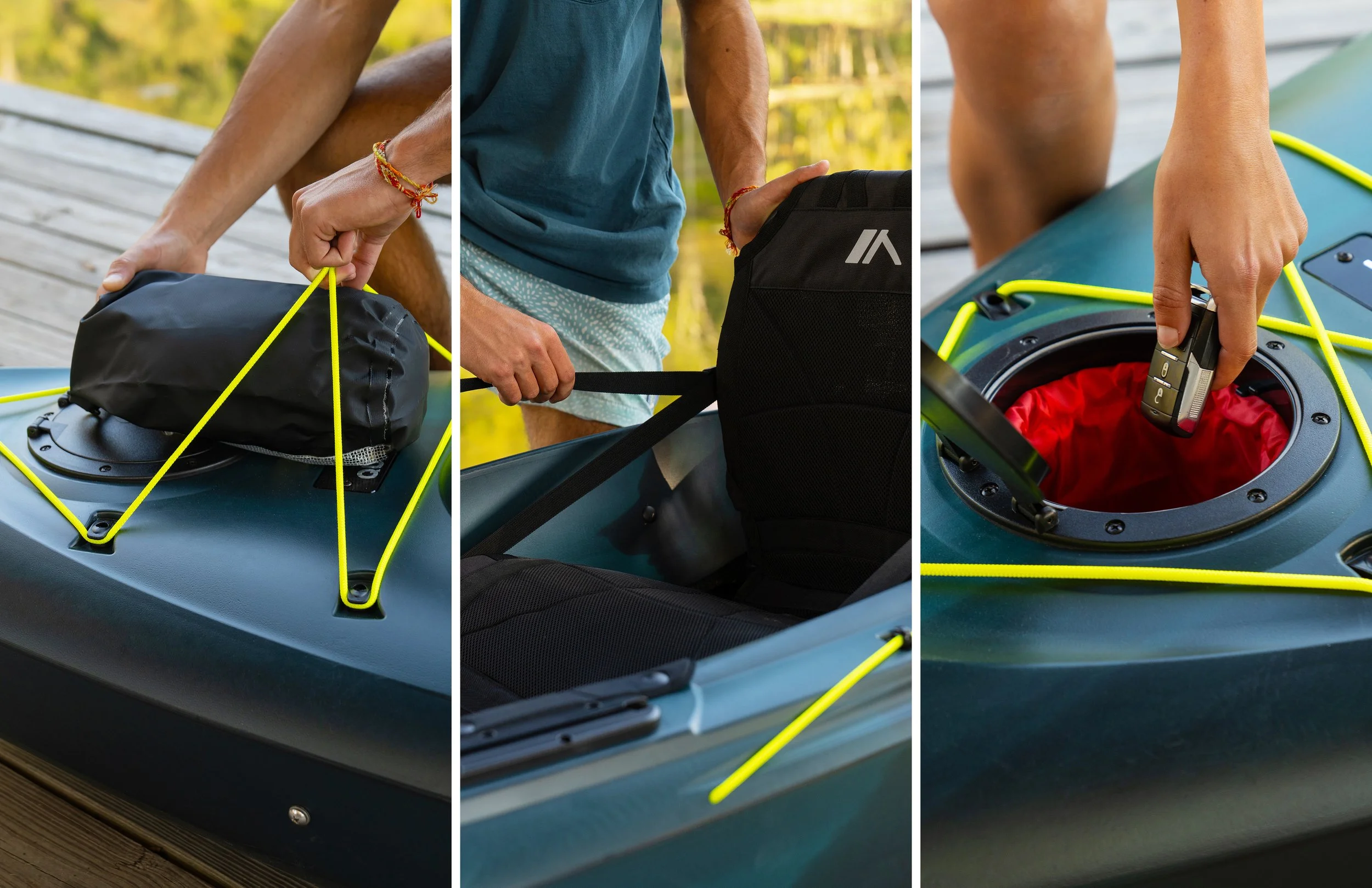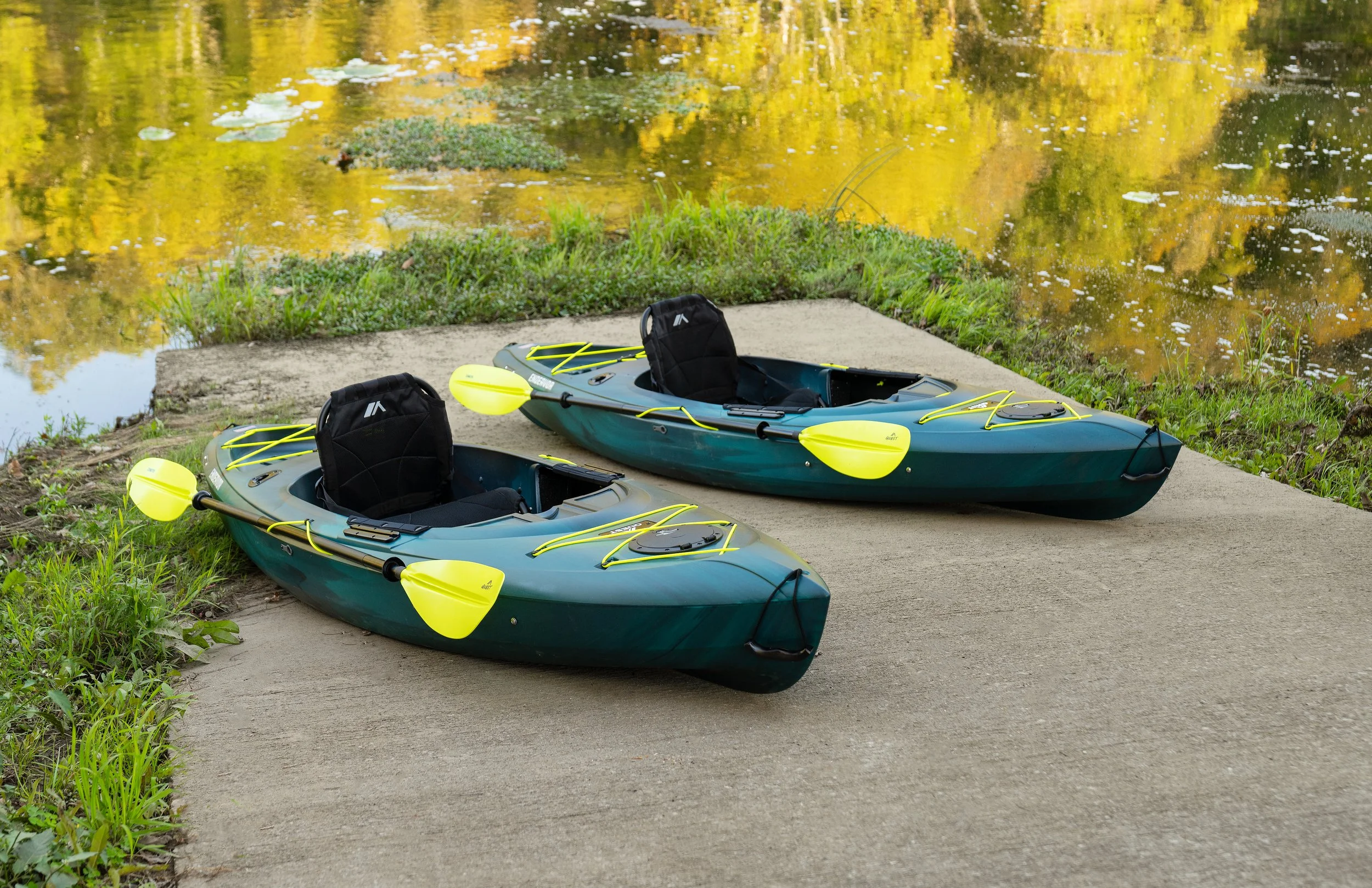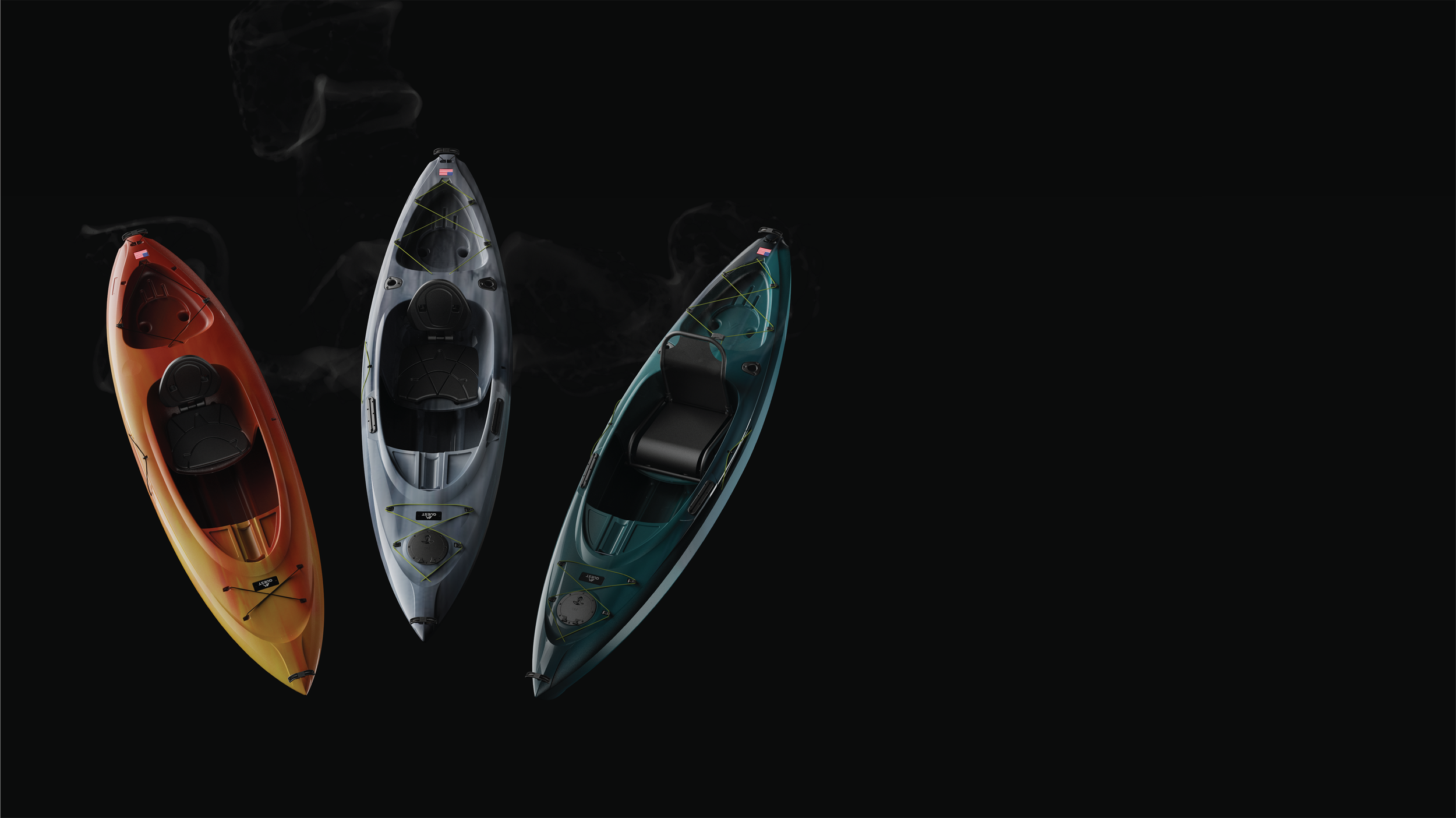
QUEST SIT-INSIDE KAYAK LINE
The goal behind designing the Quest Sit-Inside kayak line was to create a robust, versatile, and attainable series of kayaks that would appeal to a wide range of paddlers. Each model in the Quest line was carefully crafted to balance durability and ease of use, making them suitable for both beginners and more experienced kayakers. At the same time, the kayaks were designed with attention to aesthetics, ensuring they not only performed well but also looked great on the water. You can find the kayaks live on Dick’s Sporting Goods’ website: QUEST CANYON, QUEST OUTLANDS, and QUEST ENDEAVOR.
BRAND
QUEST
ROLE
LEAD DESIGNER
Project Goals.
The goal of this project was to identify key kayak styles that would help drive business and brand traction within Dick’s Sporting Goods. Through this research phase our team identified 3 core kayak styles to pursue within the SIT-IN kayak space. An OPP level SIT-IN kayak, a strong Base level SIT-IN kayak, and a robust Elevated SIT-IN kayak. I worked to design, develop, and execute each of these boats into an effective, thoughtful market solution.
Key Points.
9’9” - 10’ length- Comfortable seating optionsDry storage (tiered per model)Conveniently placed accessory railsBow and stern bungee storageComfortable toggle handleComfortable carry optionsRod holders for potential angling use5 Gallon bucket storageAccommodates coolers in tank wellTrend forward colorsStrong primary and secondary stabilityAttainable price-points and feature sets for all consumers
01 OPP
02 BASE
03 ELEVATED
OBSERVATIONS
Through observations and market assessment I worked to understand key attributes and features of competitive kayaks. This phase consisted of testing competitive boats, creating design research scopes, and identifying trends in the market.
Pelican.
Pelican differentiates itself in the kayaking market by providing a wide range of affordable kayaks with features similar to Quest's. Their unique manufacturing process enables them to offer accessible, functional products, establishing them as a strong competitor, especially in budget-conscious segments without compromising performance.
Wilderness Systems.
Wilderness Systems stands out in the kayaking market for high-quality, premium-priced products. Their robust designs focus on durability and performance for dedicated users, enhancing the appeal of their kayaks.
Perception.
Perception offers a well-designed product with quality components for paddle activities. By focusing on ergonomics tailored to fishing, recreational paddling, and touring, Perception improves user comfort and enhances the overall experience on the water.
CONSUMER VOICE.
Through athlete communication and product reviews, I gained insights into effective features and potential areas for improvement within the existing market offerings for kayaks (Below call out some of the key reviews and points mentioned by our target athletes).
“In 2013, I bought a similar version of the Argo- at that time it was called a Vortex. As an older and shorter woman, I wanted a kayak I could easily lift myself. It also helped that it fit into my smaller hatchback. Even though I have a longer and more expensive kayak, I will not let go of this one. It has held up well and is my go to kayak for spur of the moment paddles. My only complaint is the lack of foot braces, otherwise I would give it 5 stars. A friend installed some aftermarket foot braces and now the kayak is perfect!”
We now have many kayaks. Our new Pungo 120s are our go to kayaks. The seat is by far the most comfy of all the kayaks we have. Tracking straight and true is not a problem at all. Very stable. The best thing by far is the comfort, the open cockpit with dash and the phase 3 seat. Coming out of a 10ft kayak to a 12 foot there are something to consider. 1 They don’t fit in the truck as well 2 They don’t turn on the water as easy.
This is not a review as I have not bought this Kayak, however was about to on impulse. I decided to take a look at some reviews from people who actually did buy it, and boy am I glad I did. It seems generally to be a decent yak for the price, with one glaring drawback that everyone seems to mention, and that’s TRACKING! I’m a river yakker who likes to paddle both up and down river, so that’s a deal breaker for me, and the reviews stopped me from buying one of these.
DESIGN FOCUS.
INSPIRATION.
Linear Division.
Linear division embraces the idea of elemental separation with key lines and surfaces.
Transitional Surfaces.
Focusing on how surfaces transition between different sectors and elements of the kayaks.
Feature Integration.
Working to make sure features feel integrated and congruent throughout the kayak design.
CONCEPT SYNTHESIS.
Below is a snapshot of some of the ideation phases that were executed during the design process. I worked with everything from 2D hand sketches, 2D Illustrator artwork, to even 3D foam models (Sampling of sketches due to proprietary information).
PROTOTYPING.
Full Scale 2D Validation.
I spent time printing out several iterations of the kayaks to test ergonomic placement of rails, bungees, and key features. Through this process I was able to troubleshoot smaller ergonomic concerns and inconsistencies.
We worked with our vendor to create a full scale CNC’d foam prototype of the boat to fully validate ergonomics and key features. I spent time confirming bungee configurations, 5 gallon bucket inset sizing, and foot brace placement. This phase helped button up the design and provide feedback to our vendor to make final 3D updates.
Full Scale 3D Validation.
Foam Proto Paddle Testing
This was a pivotal step in identifying final hang-ups in the design of the boat. We took the sealed foam prototype and applied bow and stern weight to mimic the buoyancy of a real kayak. Upon paddling the boat we were able to make final judgements and tweaks to prepare the 3D for production.
FINAL 3D DEVELOPMENT.
3D Data Development.
During the 3D development phase, I focused on creating baseline 3D models and collaborated with our factory partner to refine the model for production and ensure final functionality. I also partnered with our engineering team to conduct buoyancy and performance testing. Following the successful testing and approval of the CNC foam hull, I completed the assembly process and developed a tech pack document to ensure our factory's accountability during production.
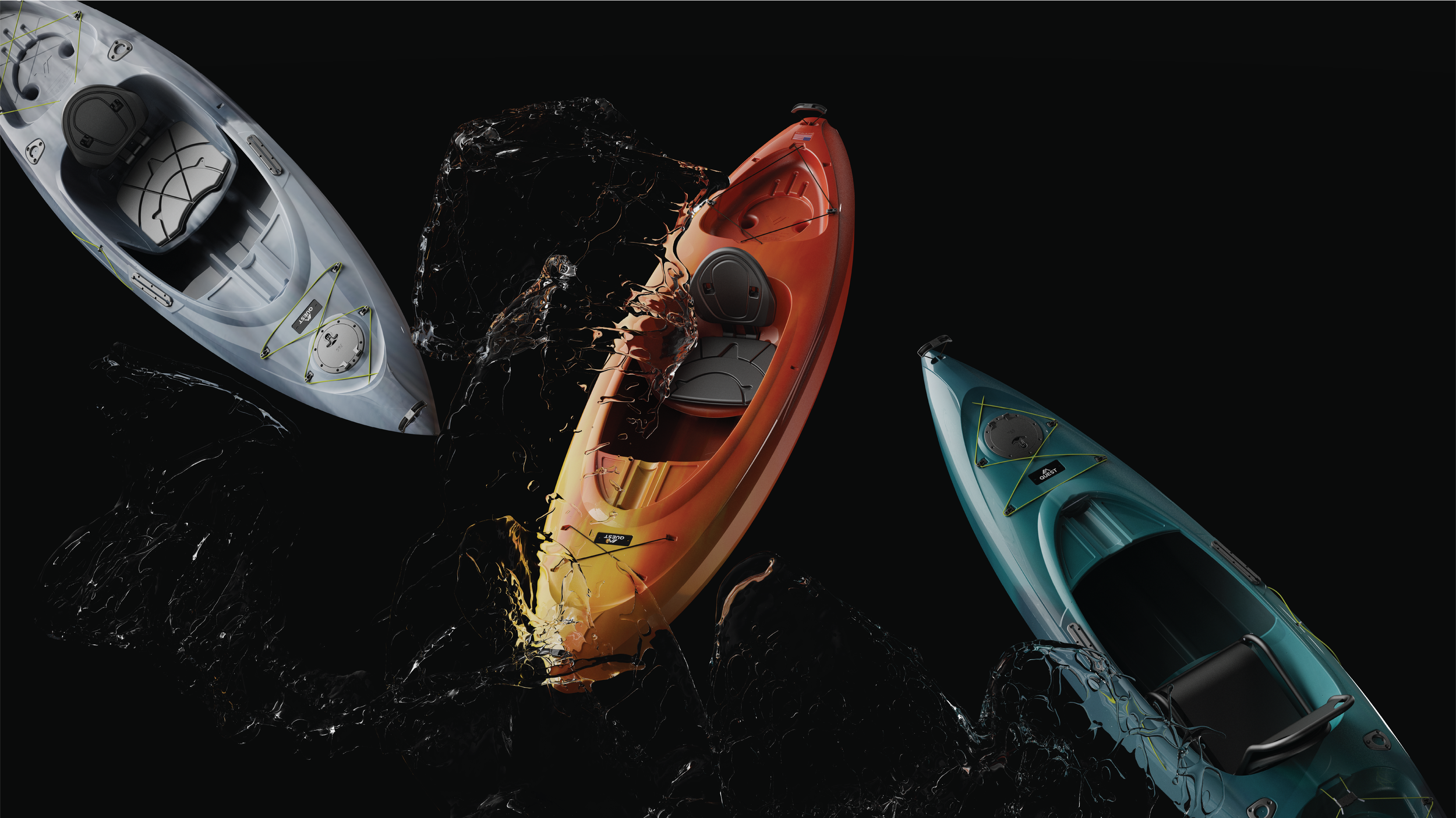
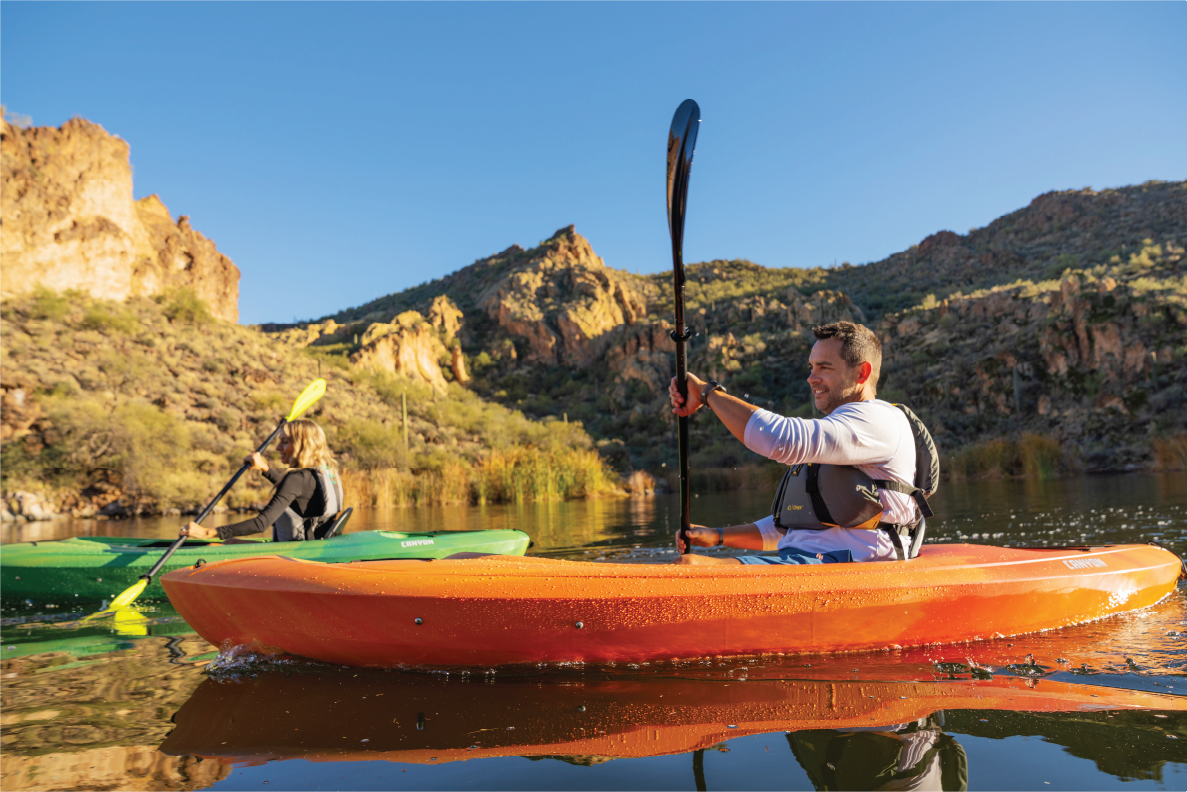
01 QUEST CANYON

02 QUEST OUTLANDS
















